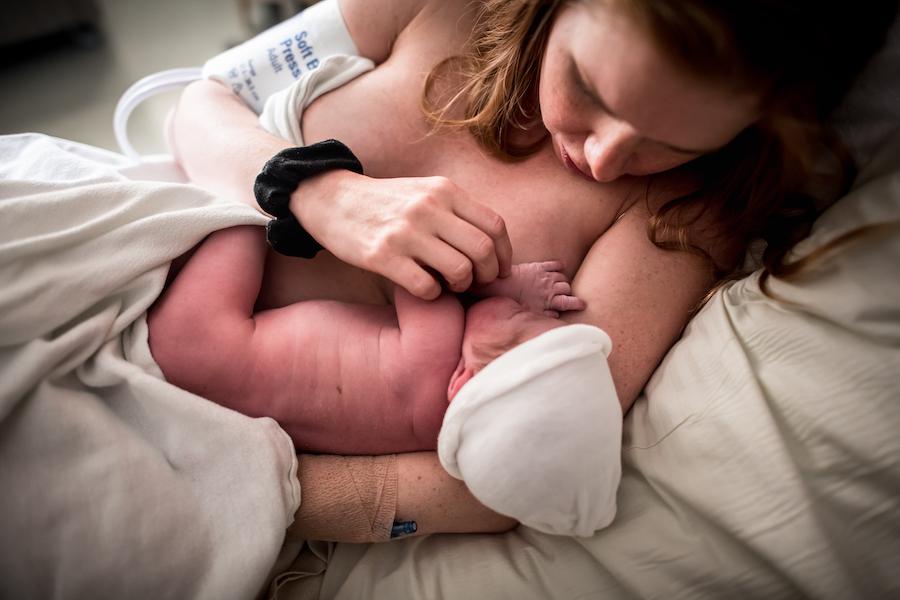The most likely cause of breastfeeding pain is that your baby is not latching correctly or that your baby is not close enough to you. Another reason could be baby’s position in your arms—either that your baby is too close to your armpit or too close to your chin. Or your little one has not latched correctly, causing sores or cracks on the nipple. Tongue tie, or ankyloglossia, could be yet another reason.
Breastfeeding should be painless
There is no reason to settle for painful breastfeeding, either at the beginning or later. When your baby first starts to suck it is normal to feel some pain or tenderness, but it shouldn’t last more than that. Be aware of how it feels and respect how it feels when baby sucks.
When breastfeeding hursts—do this
- Look to see that baby latches correctly and has a large portion of the breast in his or her mouth. Wait until baby opens wide and hold your baby very close. Not all babies open wide, in which case you will have to wait until your baby opens as wide as possible.
- If you feel that breastfeeding is painful/hurts after the first few sucks, carefully switch your baby’s position in your arms. It’s often a question of lowering baby from your armpit and bringing your shoulders down so that baby is positioned below you.
- Hand express some breast milk before and after baby nurses. When you hand express before baby nurses, you help baby to initiate the let-down reflex so that baby can suck more calmly from the start. Soothe your nipples after nursing by hand expressing a drop of milk that you apply to your nipples.
- Air-dry your nipples. Oxygen heals wounds. Restrict the use of creams and ointments since they block oxygen in the air from reaching the wound. If you feel that an ointment is soothing, alternate between using and not using it.
- There are different types of breast shells that provide relief. They relieve the pressure on the nipple and are stocked by pharmacies.
- Take a few deep breaths and drop your shoulders while your baby first latches—this is when it feels the most.
- You can also try using a nipple shield. This can make nursing feel more manageable (unless making minor adjustments to baby’s position reduces the pain).
- Hand express or pump for relief on the nipple and reduce tenderness.
- Do an evaluation using Checkup—5 steps to successful breastfeeding.
- If you have a partner, involve them to get help and relief.
When breastfeeding is painful even later
If breastfeeding becomes painful later (when baby is a bit older and breastfeeding has not been an issue before), there are a few reasons:
- Bacteria or yeast infection –> Consult your child health clinic, breastfeeding clinic or healthcare provider.
- White spots, tiny white spots that form on the nipple, are like small salt crystals inside the breast that also form on the inside of a milk duct and can cause pain during and after feeding. –> Consult with your child health clinic, breastfeeding clinic or healthcare provider.
- The nipple turns white and it’s like a vasospasm, which also causes breastfeeding pain. –> Consult your child health clinic, breastfeeding clinic or healthcare provider.
- Baby has tongue tie --> Contact your child health clinic or breastfeeding clinic for a referral to a pediatrician or an ear-nose-throat specialist to perform a clip.
- There are also other reasons why breastfeeding is painful.
Baby bites
When your baby’s teeth come in, he or she might bite your nipple, which can be immensely painful. Say “No” clearly and succinctly, and take him or her off the breast for a while. Resume nursing in a few minutes. Repeat as needed.
Find what works for you
The most important thing is that you respect how it feels when you breastfeed. Test various breastfeeding positions and make minor adjustments to baby’s position in your arms in order to find what works best for you and to ensure that feeding is painless.
If this does not help, contact your healthcare provider.
